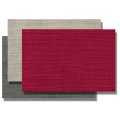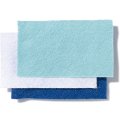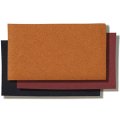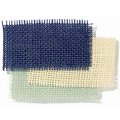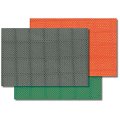Wool Felt
Information about wool felt
100% wool felt is made out of sheeps wool, is UV-resistant, tear-proof, temperature-proof from about -40 °C to +110 °C, will not burn and carbonizes at temperatures over 200 °C. For larger orders we can also have the wool felt treated to make it flame-resistant. Its elasticity, its permeability to air, its great insulation qualities against heat, cold and sound, its pH neutrality and its dimensional stability make this a material with a wide variety of possible uses.
The relatively high price of wool felt comes about primarily from the quality of the raw material used and the fairly elaborate production process. First, the wool must be cleaned and teased in a succession of steps to remove vegetable matter, dirt, sweat, etc. Sometimes a few tenacious plant fibres are able to withstand all the cleaning processes and end up appearing on the surface of the finished product. Much in the same way as colour variations and small differences in the thickness of the material, this is not a grounds for a customer complaint but rather serves to emphacise the unique character of the natural product called felt!
After the cleaning and teasing, the material is carded, that is, the wool fibres are aligned in one direction. After that, the ability of wool to mat and press together (to “felt”) under the influence of leaching, heat, movement and compression is put to use. For this purpose the fibre blanket is compacted between moveable plates whereby the wool fibres already link up into a relatively firm bond. This mass is then introduced into the so-called planker where, through crushing, pounding and compressing, the final density of the felting process is achieved. As a result of the milling and the storage of the heavy, wet felt lengths between the various steps in the production process, horizontal markings are generated in the merchandise. The lengths are then subsequently stretched, dried and, through the use of large warm plates, flattened. Despite this last treatment, one or more markings remain and will appear in irregular intervals along the roll. As the felt is used more and more, its surface becomes more texture and the markings are no longer so noticeable.
Please note that felt should not be washed in the washing machine. The high proportion of grease in the wool together with its density impedes the intrusion of dirt so that spots or stains can usually be removed by means of dabbing or brushing with soapsuds made with a wool detergent. Any residual fluid during this process should be absorbed by means of a dry cloth. If the spot or stain remains, we recommend dry-cleaning.
